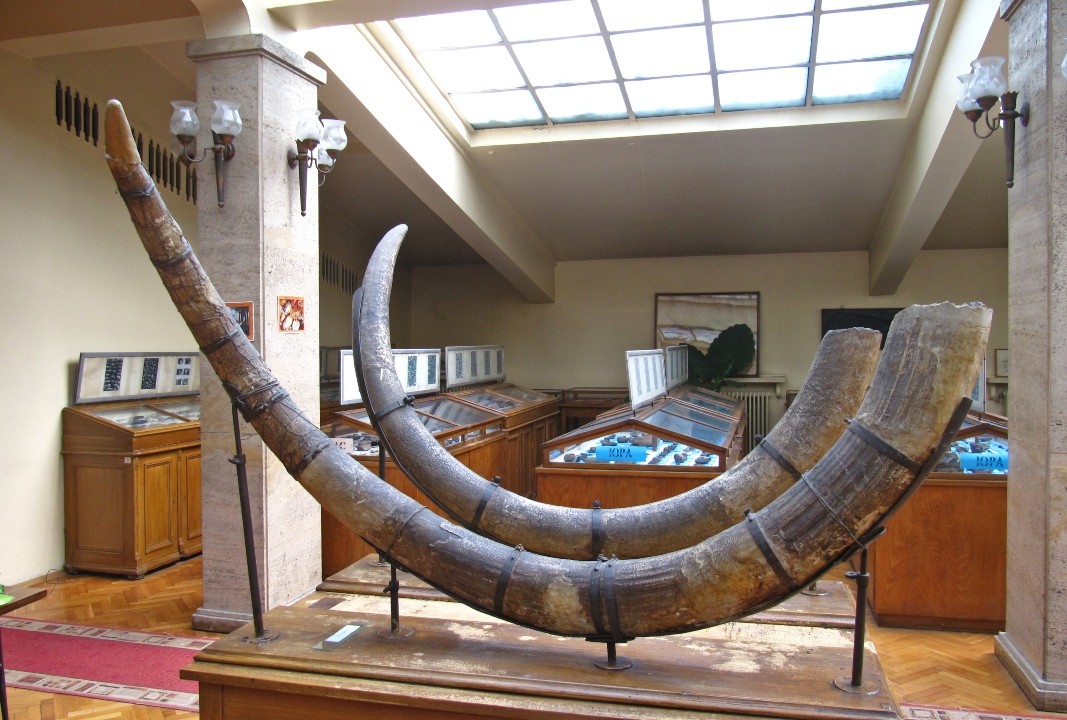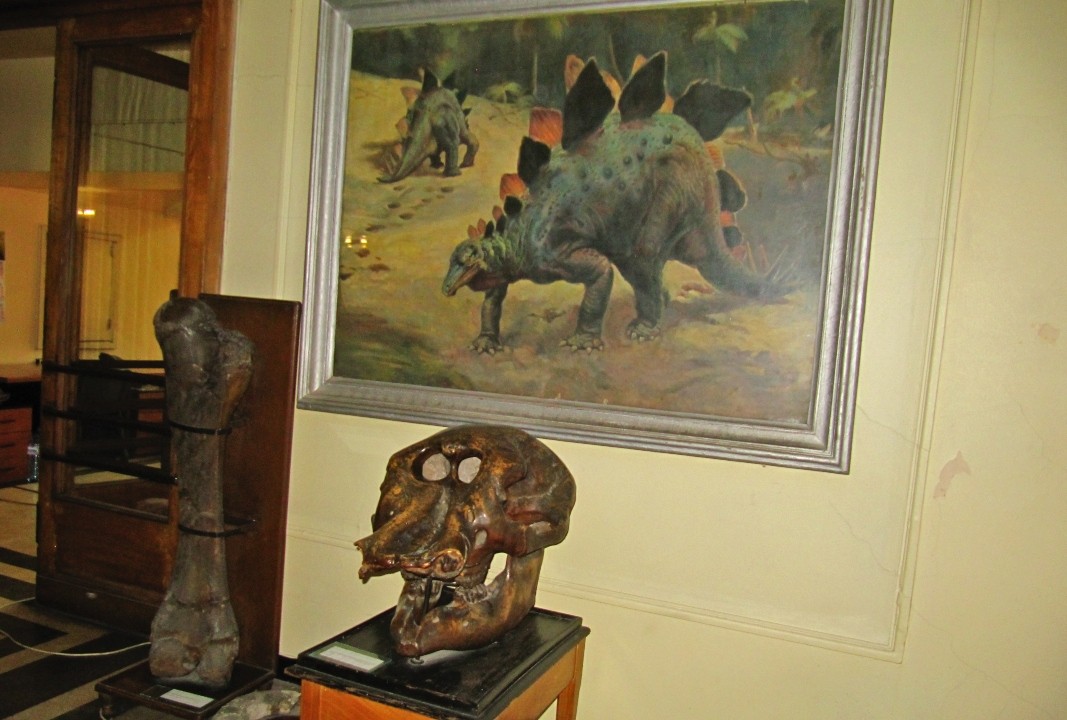In 1965, a biology teacher from the town of Assenovgrad ran across a gigantic skeleton in the region of the village of Ezerovo. During a summer expedition with his students, Dimitar Kovachev discovers the world’s most well-preserved deinotherium whose gargantuan posture nowadays welcomes visitorsin the Museum of Palaeontology and Historical Geology at Sofia University “Saint Kliment Ohridski”.
The temple of the mind, which every university needs to be, keeps testimonies of the presence of brilliant intellects from all segments of knowledge. Yet, hardly anyone could imagine that the dome in the university’s Northern wing would preserve a place which brings time back to prehistory.
“The museum of palaeontology and historical geology started with a small collection of specimens gathered primarily by the first Bulgarian geologist prof. Georgi Zlatarski,” says Dr Svetlozar Seferinov, palaeontologist and museum curator. “In the beginning, collections were bought from abroad for students to get acquainted with the basic animal species. Consequently, with the affirmation of our Geology department, various fossils were gradually collected. Almost all specimens preserved in the museum are from Bulgaria and some have been even discovered here for the first time and have been given Bulgarian names. We have well-presented flora and fauna – among everything, most well-studied and numerous are the ammonites. Of course, we have collections of other organism groups such as belemnites and corals. In the museum’s lobby, one can see the remains of mammals once common on Bulgarian lands.”
A four-metре skeleton with an open maw, gigantic tusks and legs, resembling a bird’s foot, is commanding respect when you look at it from the museum’s grating. The pride of the palaeontologists – the deinotherium – is from the Proboscidea family, and represents a 45-year-old specimen that lived 10 million years ago, at the end of the last Ice age.

“The deinotherium is one of the few exhibits in the world to have such a high level of preservation – 90% – and that makes it unique,” says Dr Svetlozar Seferinov. “Its skeleton was discovered by accident and after a long period of cleaning and stuffing, it was exhibited in the museum. The deinotherium is a herbivorous animal, a genus to contemporary elephants and to some extent, it shares common traits with them. Numerous parts of skeletons, teeth and tusks have been discovered.”
When prehistoric species were roaming our part of the earth, the climate here was close to this of an African savannah. According to the scientist, for this reason, these species became predecessors to the animals that currently inhabit the African continent,
In the mammalian department visitors can see remains of the ancient horse hipparion, fossils of mammoths, mastodons, anancuses, zygolophodones, as well as fragments of skeletons of ancient rhinos, giraffes, wild hogs, hyenas and bats. One of the most interesting specimens is the almost entirely preserved dolphin skeletonfound near Bulgaria’s seacoast town of Balchik. Examples of fossil plants and protozoans (microscopic-scaled organisms) are also among the precious specimens of the palaeontological exhibition.

The museum also boasts a rich collection related to geology. In it visitors can see the most substantial Bulgarian collection of geologic maps, while in the oldest of these, information about territories beyond Bulgaria’s present-day borders can be found.
The exposition halls contain more than 200 thousand exhibits as collections continue to grow owing to the palaeontologists.
“The fossils are exemplars of national importance since they show what life and the world of plants on Bulgarian lands were millions of years back in time,” adds Dr. Svetlozar Seferinov and recommends that everyone shoulddrop by the University dome at least once.

English version Boris Totchev
Photos: gpff.gea.uni-sofia.bg / Museum of Palaeontology and Historical Geology, Sofia UniversityHis Holiness Daniil, Patriarch of Bulgaria and Metropolitan of Sofia, addressed the Orthodox Christians on the eve of the bright Nativity of Christ (Christmas Eve). "Silent in prayer, gathered around the warm hearth, we await the fulfilment of what was..
In anticipation of the Nativity of Christ, the Orthodox Church opens its doors for today's divine services, heralding the fulfillment of the mystery of the Incarnation. "Let us experience the Nativity of Christ during the solemn services, so..
Christmas Eve is one of those quiet family holidays, filled with hope for the future. At the border between the past and the present, Orthodox Bulgarians gather to welcome the days to come. Traditionally, the table on Christmas Eve is simple and..
The Nikola Vaptsarov Naval Academy in Varna has marked 144 years since its founding. A period in which the educational institution has..

+359 2 9336 661
